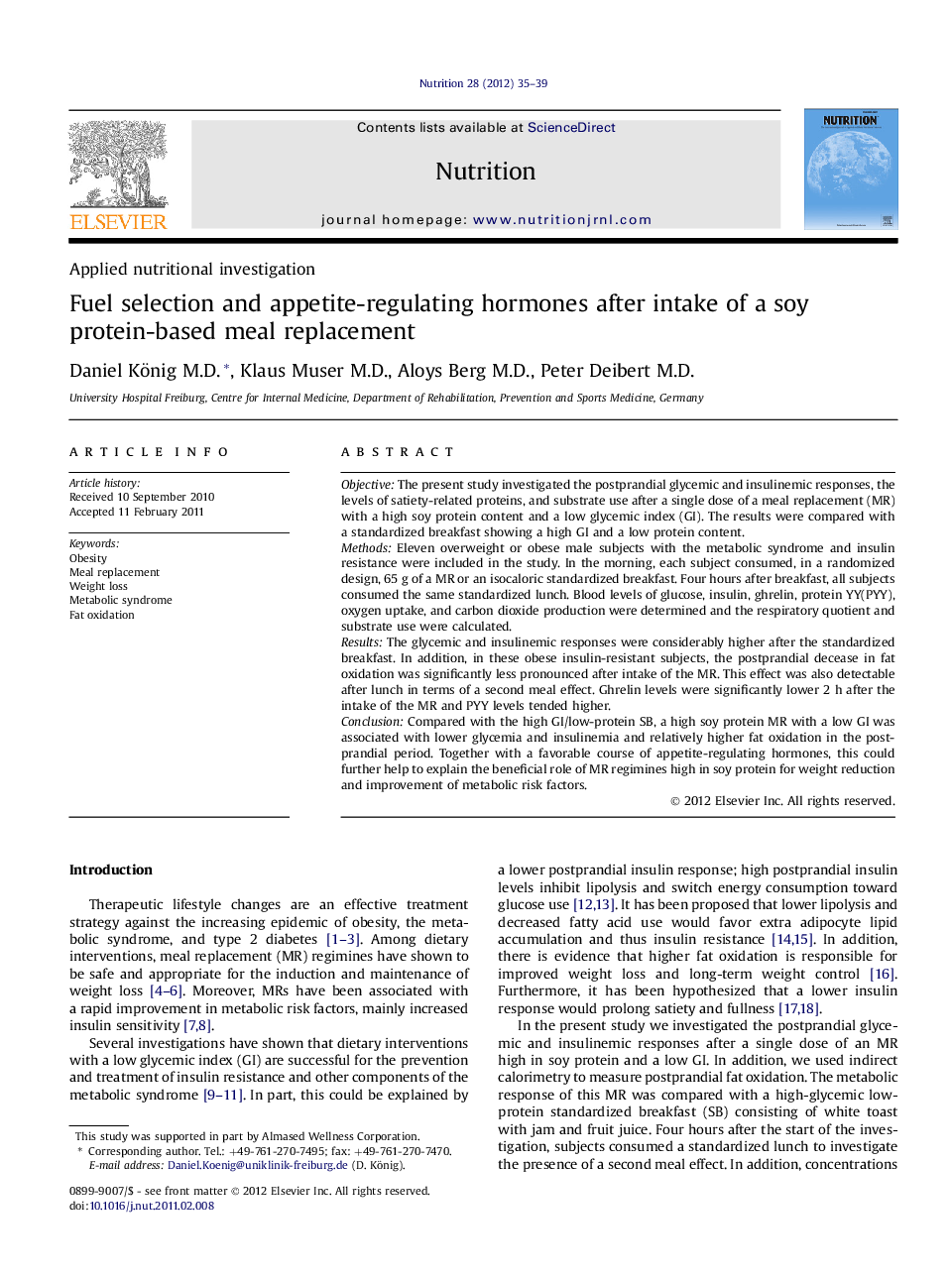| Article ID | Journal | Published Year | Pages | File Type |
|---|---|---|---|---|
| 3276513 | Nutrition | 2012 | 5 Pages |
ObjectiveThe present study investigated the postprandial glycemic and insulinemic responses, the levels of satiety-related proteins, and substrate use after a single dose of a meal replacement (MR) with a high soy protein content and a low glycemic index (GI). The results were compared with a standardized breakfast showing a high GI and a low protein content.MethodsEleven overweight or obese male subjects with the metabolic syndrome and insulin resistance were included in the study. In the morning, each subject consumed, in a randomized design, 65 g of a MR or an isocaloric standardized breakfast. Four hours after breakfast, all subjects consumed the same standardized lunch. Blood levels of glucose, insulin, ghrelin, protein YY(PYY), oxygen uptake, and carbon dioxide production were determined and the respiratory quotient and substrate use were calculated.ResultsThe glycemic and insulinemic responses were considerably higher after the standardized breakfast. In addition, in these obese insulin-resistant subjects, the postprandial decease in fat oxidation was significantly less pronounced after intake of the MR. This effect was also detectable after lunch in terms of a second meal effect. Ghrelin levels were significantly lower 2 h after the intake of the MR and PYY levels tended higher.ConclusionCompared with the high GI/low-protein SB, a high soy protein MR with a low GI was associated with lower glycemia and insulinemia and relatively higher fat oxidation in the postprandial period. Together with a favorable course of appetite-regulating hormones, this could further help to explain the beneficial role of MR regimines high in soy protein for weight reduction and improvement of metabolic risk factors.
